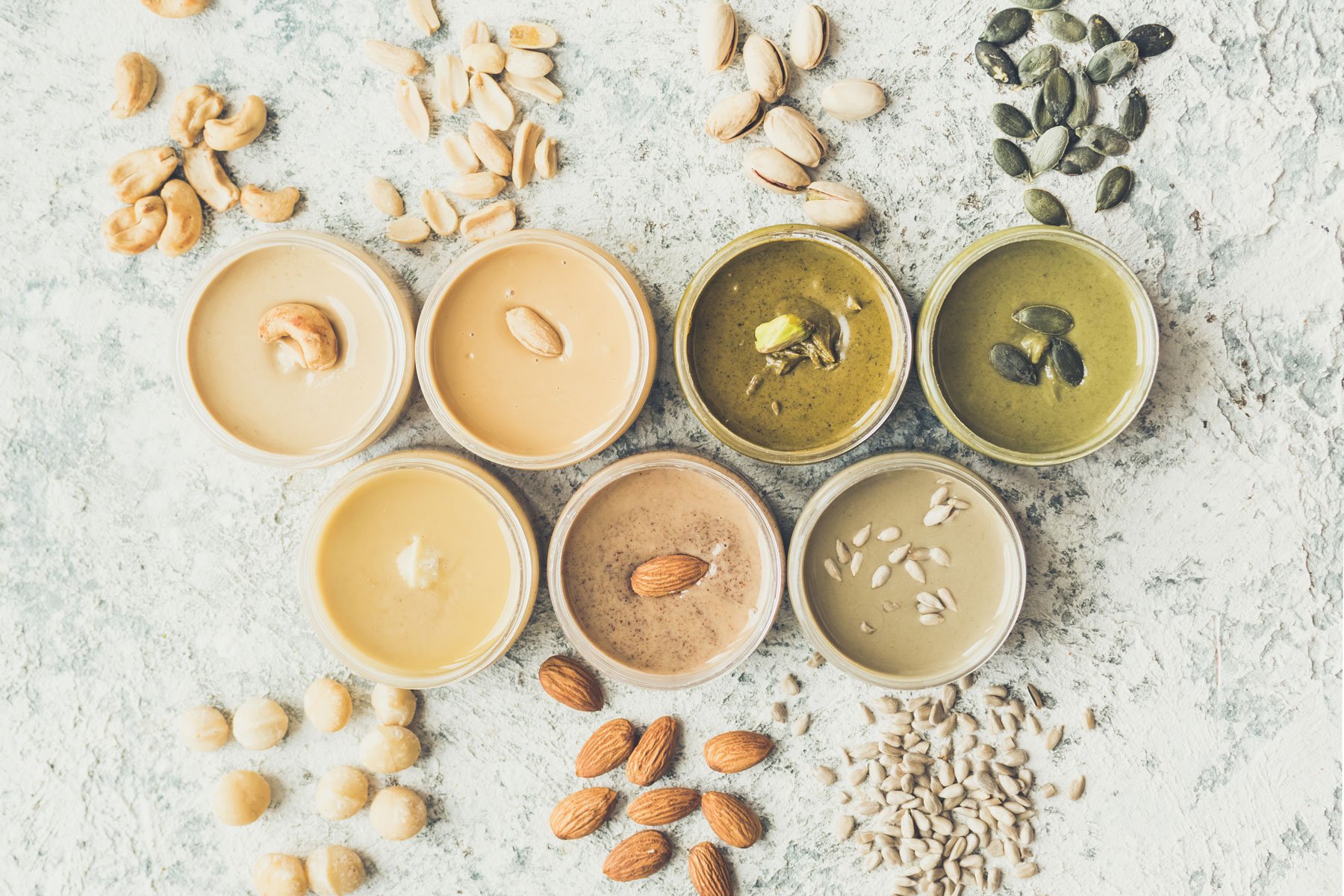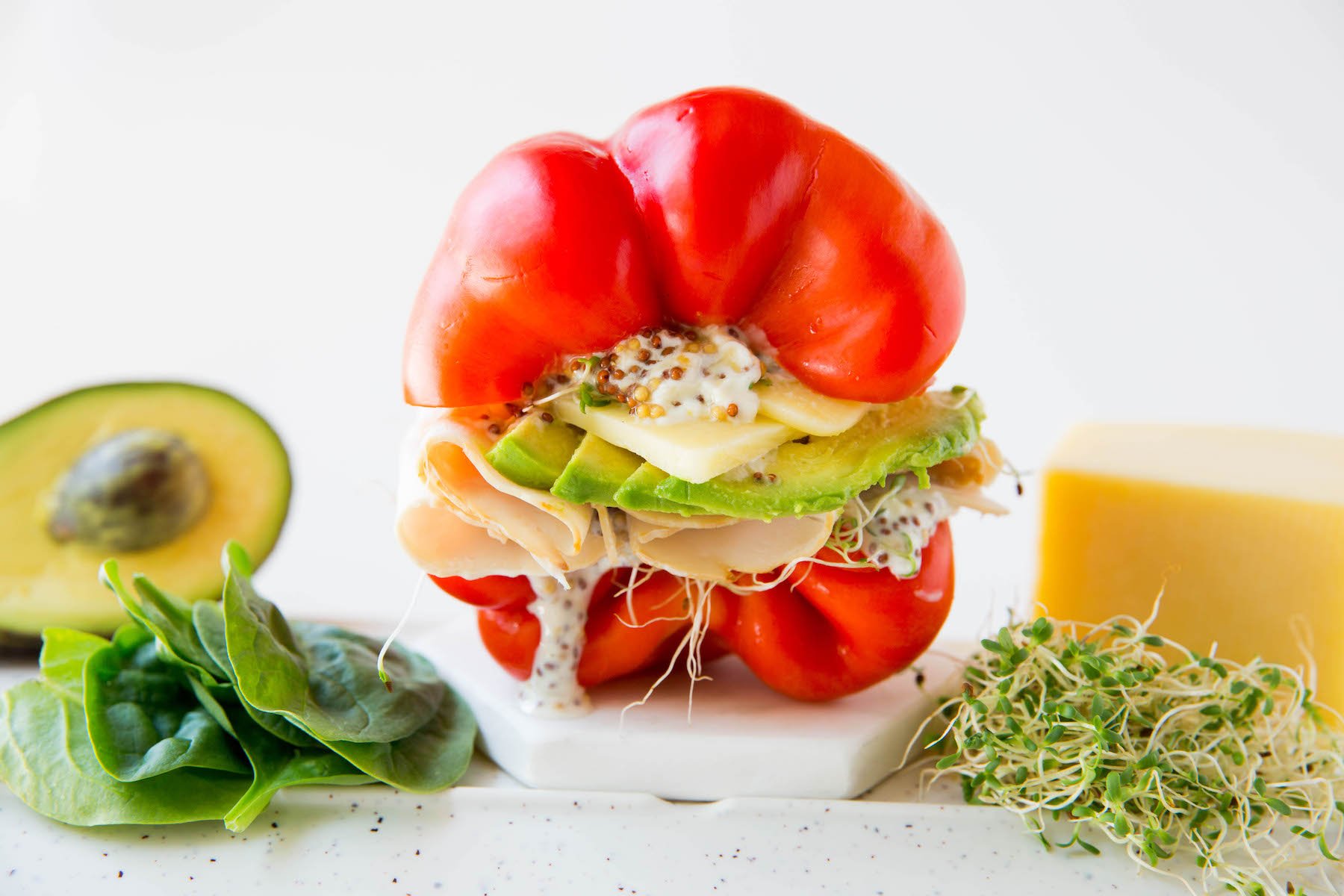Image courtesy Green Kitchen Stories
Fiber is essential for metabolic health, helping with everything from balancing blood sugar levels to regulating lipid profiles to promoting gut health. Unfortunately, more than 90% of Americans aren’t eating enough fiber. While the current Dietary Guidelines for Americans recommend that women consume 22-28 grams daily and men eat 28-34 grams daily, many experts, including Levels advisors, say most adults should consume 30-50 grams of fiber daily.
Before you reach for a bowl of oatmeal and swap your white bread for whole wheat, you should bear in mind that many popular high-fiber foods also contain a lot of carbohydrates and may spike blood sugar when consumed in abundance. The key is to be mindful of what types of fiber-rich food to consume. Levels advisor Dr. Robert Lustig recommends consuming foods with a carb-to-fiber ratio of less than five-to-one for optimal metabolic health. (You can usually find carb and fiber counts on a food label.)
How you pair food matters too. “Sweet potatoes on their own wouldn’t meet these criteria with 27 grams of carbs and only 4 grams of fiber per cup,” says Zoë Atlas, MPH, RDN, “and we know that they tend to really spike some people. But I also support including things like this in moderation if paired with protein and healthy fat.” For example, she says, top a sweet potato with cashew-based vegan sour cream and eat it with a healthy protein source like wild-caught fish, free-range poultry, or grass-fed beef. You can also balance meals with other high-fiber, low-carb ingredients like lentils, chia seeds, or avocado, which provide a huge fiber boost with minimal extra carbs.
Related article:
When adding fiber to your diet, it’s also important to remember that there are two kinds of fiber: soluble and insoluble, and you need both. Soluble fiber dissolves in water and other body fluids, transforming into a gel that moves slowly through the digestive system. Conversely, insoluble fiber doesn’t dissolve in water and fluids and passes through the digestive tract intact, making for bulkier stools that move more quickly and easily through the body. Together, these fibers reduce the rate of absorption of sugars, thus curbing spikes in blood glucose and insulin. Fiber also promotes bowel regularity, gut health, and a healthy blood lipid profile, and can aid in weight management.
Many whole foods contain both types of fiber, such as beans and apples. Processed foods that tout “added fiber” might only contain soluble fiber, but that alone won’t deliver the blood-sugar stabilizing benefits of the combination of fibers found in whole foods.
The tips and recipes below shed light on how to incorporate more delicious high-fiber foods into your diet.
How to Add More Fiber to Your Diet
Increase your fiber intake gradually. Consuming a bunch of fiber at once can have unintended consequences such as GI distress. “If a diet is relatively low in fiber, jumping from 10 grams to 35 grams too quickly may cause constipation,” explains Rhyan Geiger, R.D.N., founder of Phoenix Vegan Dietitian. To ensure a smooth transition, she recommends increasing your fiber intake by five grams daily until you reach your goal.
Fill your pantry with shelf-stable ingredients. Keep items like nuts, seeds, and canned beans on hand since they don’t go bad quickly and are easy to add to meals. For example, you can sprinkle slivered almonds on a salad for a crunchy boost, coat baked salmon in a flaxseed crust, or add beans to a vegetable soup.
As long as each meal contains roughly 10 grams of fiber or more, you’ll consume enough.
Double up on vegetables. Most vegetables contain at least some fiber, but certain options are better than others. Veggies high in fiber include artichokes, Brussels sprouts, spinach, broccoli, and carrots. (Pumpkin and avocado are also high in fiber but are actually fruits.)
Don’t forget about fiber-rich snacks. If you know you’re falling short on fiber in your meals, use snacks to balance out your daily needs. Think toasted and spiced nuts, vegetables, and fruits like raspberries and apples. Pair with a source of protein or fat (like cheese) to slow the release of sugar into your bloodstream.
Add fiber to every meal. Thirty to fifty grams is a lot of fiber; you don’t want to eat all of that at once, or your GI tract may suffer. Instead, include fiber in every meal and snack. That could look like a chia pudding for breakfast, a salad with crispy chickpeas and avocado for lunch, and a bowl of chili served over cauliflower rice for dinner. As long as each meal contains roughly 10 grams of fiber or more, you’ll consume enough.
High-Fiber Breakfast Recipes
1. Vegetable Breakfast Scrambles
This savory scramble takes 10 minutes to make and contains nearly 10 grams of fiber per serving, thanks to spinach, bell pepper, avocado, tomato, and hummus.
2. Chia and Raspberry Breakfast
This vibrant dish combines chia seeds with raspberries and coconut to total 27 grams of fiber per serving. Mix these with your choice of milk before you go to bed at night, and breakfast will be ready to go when you wake in the morning.
Smoothies can deliver all kinds of fiber-rich ingredients. This recipe has nearly 13 grams of fiber from chia seeds, kale, and a banana, plus the refreshing flavors of pineapple and coconut milk—like a pina colada, minus the blood sugar spike.
High-Fiber Lunch Recipes
4. Nutty Green Veggie Crunch Salad
This textural salad is packed with fiber sources: Thinly shredded cabbage and romaine lettuce, sliced cucumbers, shelled edamame, mixed nuts, and a peanut butter dressing, delivering about 12 grams of fiber per serving. Be sure to swap the maple syrup in the vinaigrette for a sweetener that’s less likely to spike blood sugar, like an allulose-based maple syrup.
5. Avocado, Fennel, and Roasted Carrot Salad
This salad contains about 10 grams of fiber per serving. Each one of the main ingredients in this recipe is full of fiber, but for even more, add the right leafy green. The recipe recommends using an option like mizuna lettuce, which has 3 grams of fiber per cup. When cooking the vegetables, use a heat-tolerant oil that’s also good for metabolic health, like avocado oil. And swap out the honey for an alternative sweetener that won’t spike blood sugar, like monk fruit.
6. Avocado Chickpea Salad Lettuce Wraps
This satisfying wrap contains about 13 grams of fiber per serving from avocado and chickpeas and uses Dijon mustard, chopped dill pickle, capers, lemon, and chives to imitate the taste of chicken salad without any meat. You can also get creative with other high-fiber sandwich wrap alternatives, such as collard greens.
High-Fiber Dinner Recipes
7. Vegan Broccoli Cheddar Soup
It’s easy to sneak fiber-rich ingredients into soups. This vegan one contains about 17.5 grams of fiber per serving from finely chopped broccoli, crispy chickpeas, and nutritional yeast (a vegan staple that delivers a cheesy flavor without any dairy and contains 4 grams of fiber per 3 tbsp serving).
This stir-fry uses spiralized broccoli stems instead of noodles for an overall fiber count of 11 grams. Skip the maple syrup used in the homemade teriyaki sauce for a sugar-free alternative, and feel free to add as many extra vegetables as you like. Carrots, celery, leafy greens, and more all pair well with the tangy, savory flavors.
Though some lentil dishes are lengthy to cook, this recipe is out to prove that you can enjoy the legume’s high-fiber benefits without the wait. Along with lentils, you’ll also get a bit of fiber and a bunch of flavor from ingredients like almond butter and fresh, chopped chili peppers. Instead of naan or rice, try serving it alongside a low-carb, high-fiber side like cauliflower rice.
High-Fiber Snacks
10. Blueberries and nuts
Blueberries have 4 grams of fiber per cup. Pair them with ¼ cup of nuts of your choosing for a couple of extra grams of fiber plus protein to help you stay full for longer.
11. Apple slices and natural nut butter
The next time you’re in the mood for an apple—which has about 4 grams of fiber on its own—slice it up and serve it with unsweetened nut butter for even more fiber. Different nut butters have different fiber contents, so choose an option that helps you meet your goals. For example, almond butter has nearly two grams of fiber per tablespoon, while peanut butter has just one gram per tablespoon.
12. Edamame with nutritional yeast
Edamame is an easy, portable snack with about 4 grams of fiber per ½ cup serving. Pop frozen edamame in a bowl and microwave to defrost before eating. Top with nutritional yeast, hummus, or nut butter for added protein and flavor.
13. Flaxseed crackers with guacamole or dip
Flaxseed crackers can contain between two and nine grams of fiber per every six crackers (depending on the brand), are generally low in carbs and are perfect for snacking because they go with everything. Pair with your favorite dip or spread, or use a recipe like this to make your own crackers and homemade guacamole.
 Learn how your body responds to your diet
Learn how your body responds to your diet
The best way to understand what habits and foods help you achieve balanced blood sugar is with a continuous glucose monitor and an app like Levels to help you interpret the data. Levels members get access to the most advanced CGMs and personalized guidance to build healthy, sustainable habits. Click here to learn more about Levels.
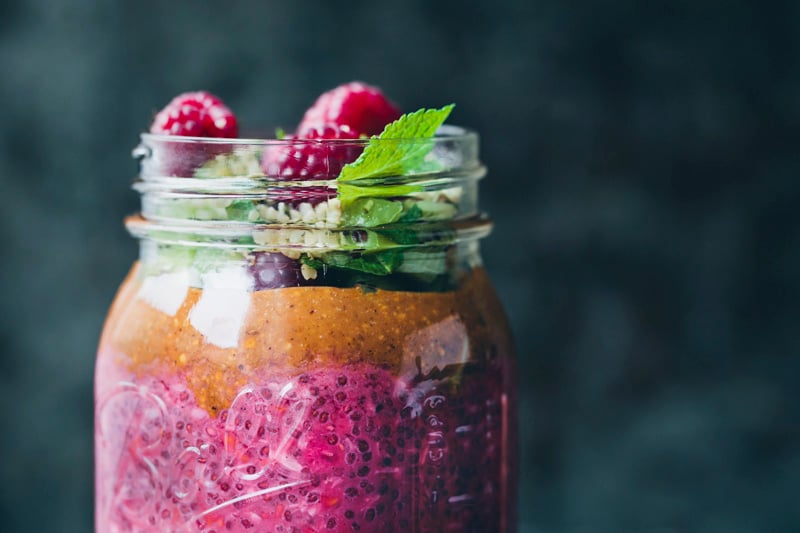
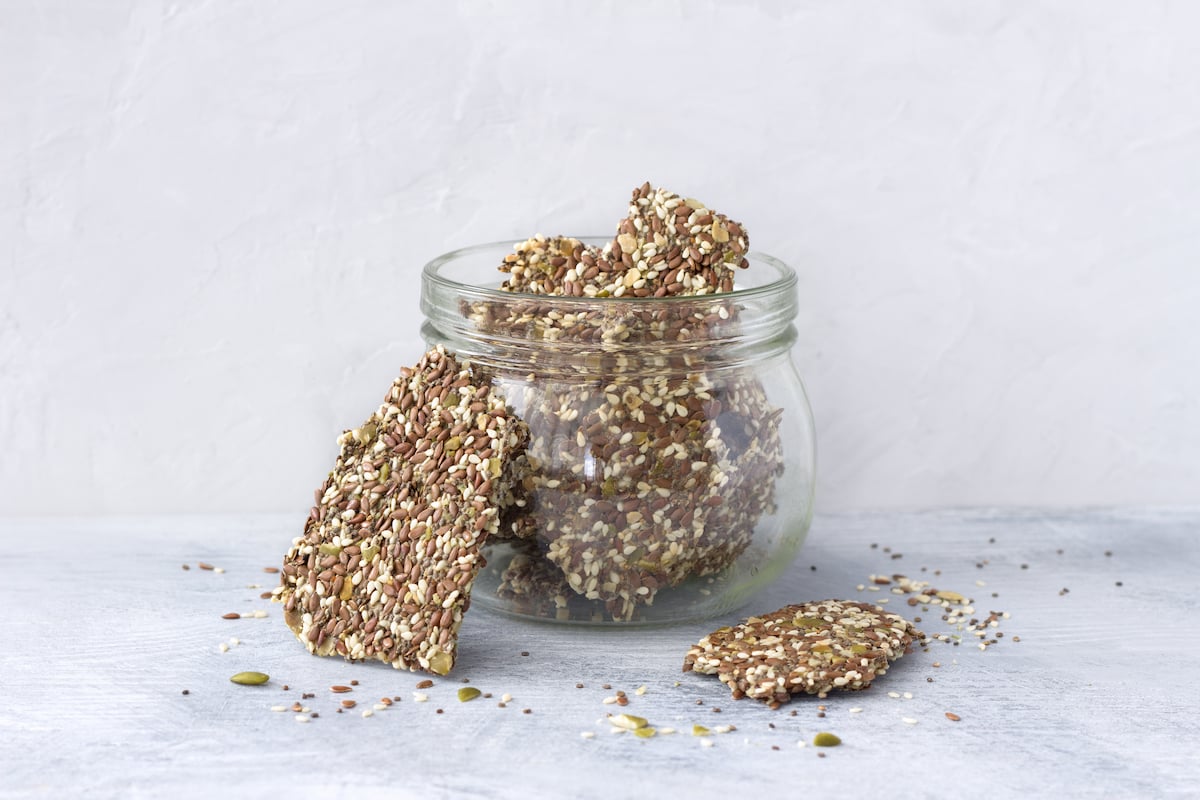
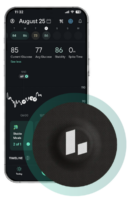 Learn how your body responds to your diet
Learn how your body responds to your diet
